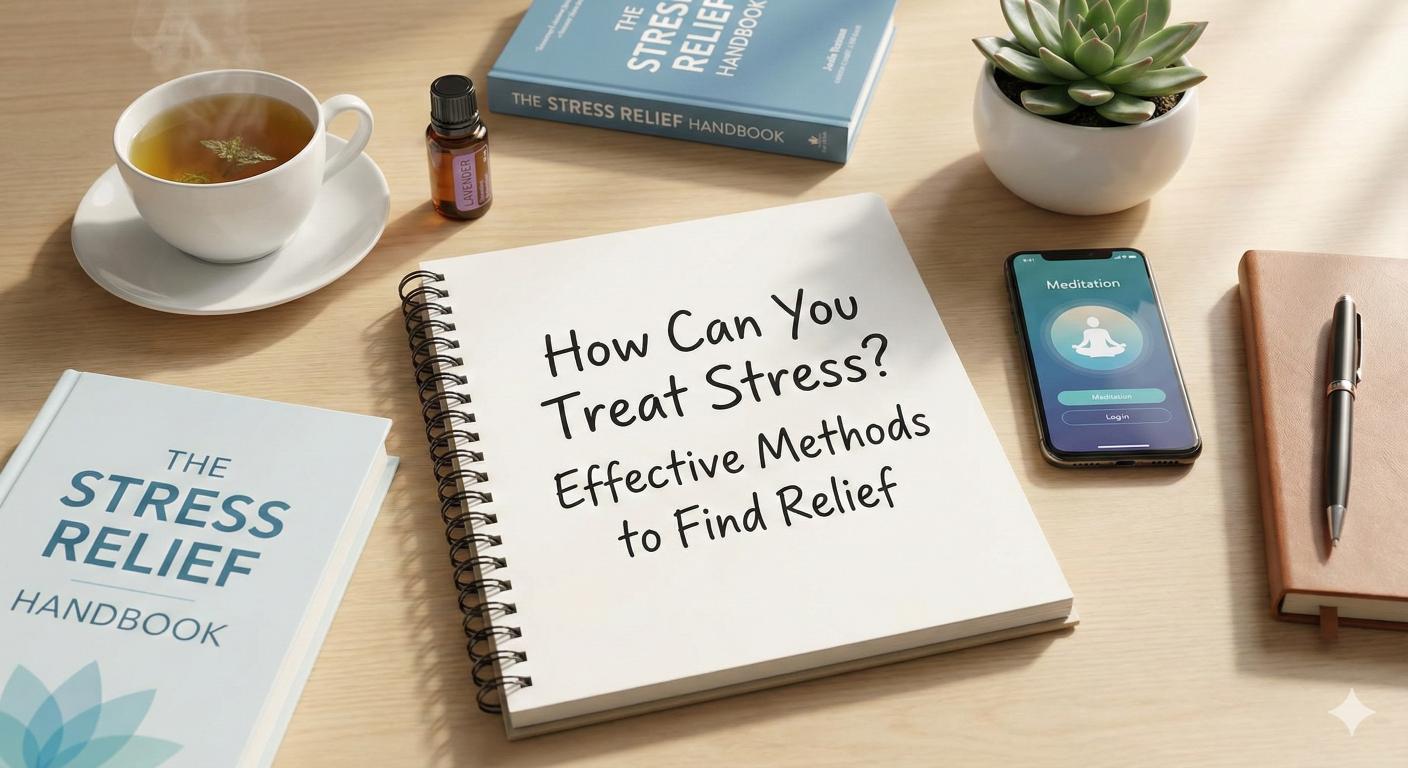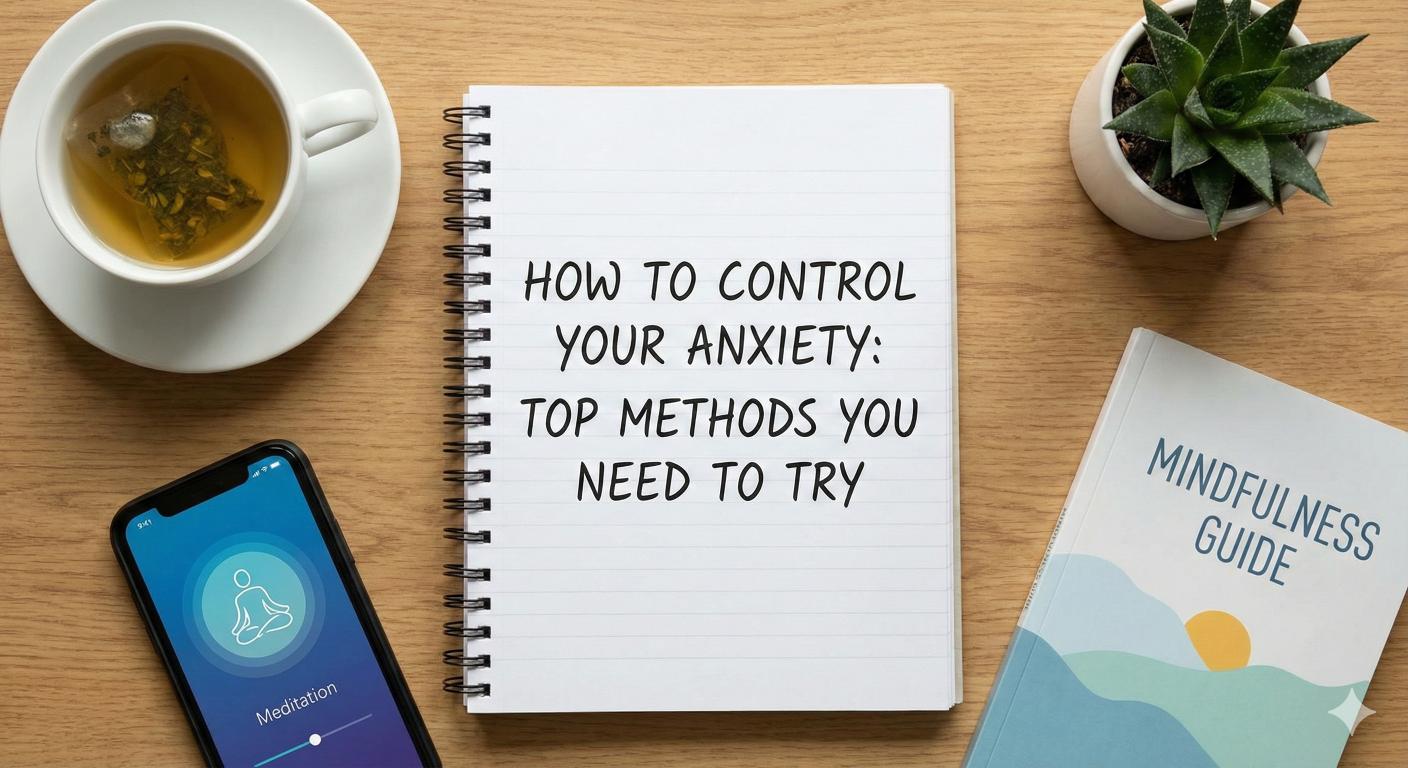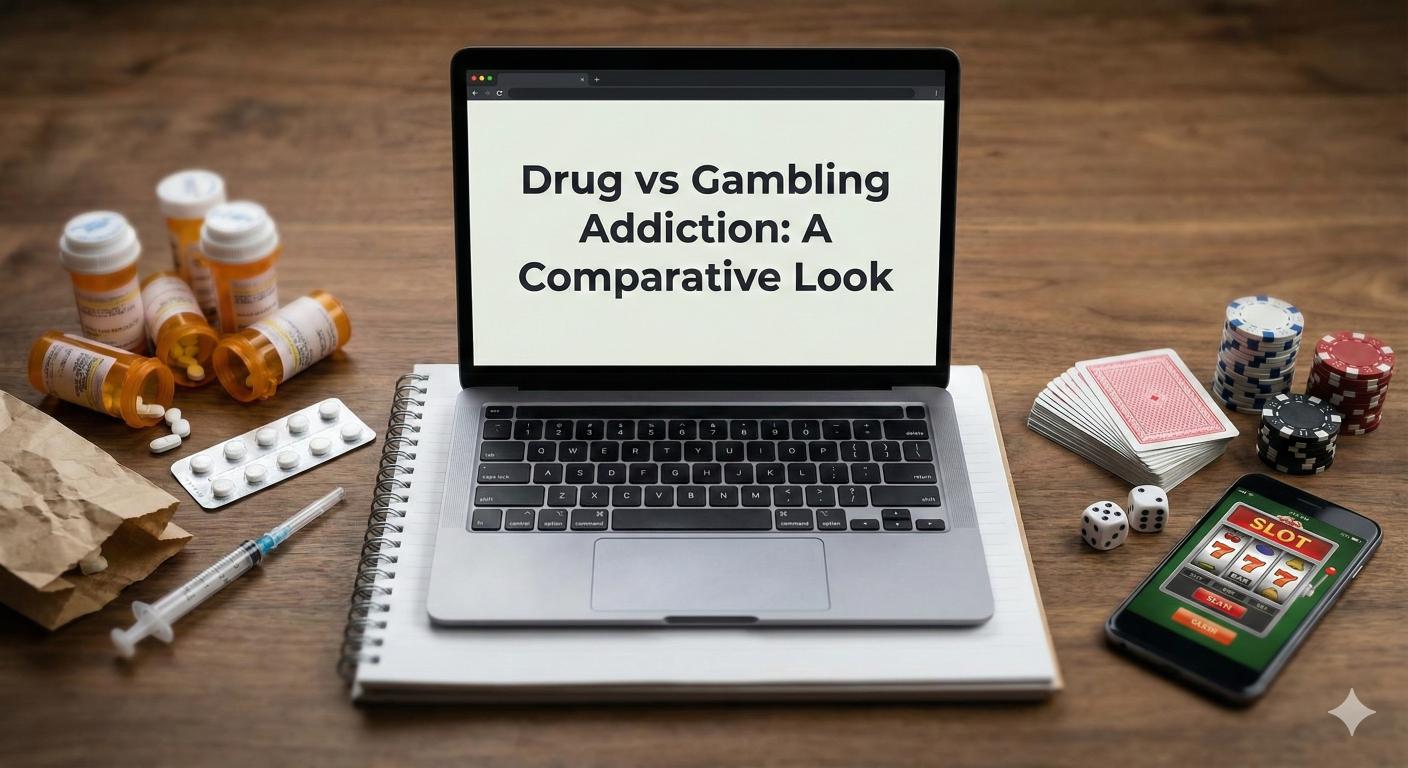How Do I Know If I Have PTSD or Anxiety
Struggling with stress? Discover how do I know if I have PTSD or anxiety and find clarity in mental health.

Understanding Anxiety Disorders
Anxiety disorders can significantly impact an individual’s daily life. Among these disorders, Generalized Anxiety Disorder (GAD) stands out for its pervasive nature, affecting various areas rather than being tied to a specific event.

Generalized Anxiety Disorder (GAD)
Generalized Anxiety Disorder (GAD) is characterized by persistent and excessive worry about a range of issues. Individuals with GAD do not focus on a particular fear or worry but may find themselves anxious about many areas of their lives, such as work, health, and social interactions. This ongoing anxiety can interfere with daily activities and cause distress. Seeking help from a healthcare professional is essential for an accurate diagnosis if symptoms persist. For more information about anxiety disorders, visit what is mental illness?.
Symptoms of GAD
In the United States, nearly 20% of adults aged 18 and older experience different types of anxiety disorders, including GAD, panic disorder, and social anxiety. Symptoms of GAD may include the following:
SymptomDescriptionExcessive worryingConstantly worrying about various issuesRestlessnessFeeling on edge or unable to relaxFatigueEasily fatigued due to ongoing tensionDifficulty concentratingFinding it hard to focus or having your mind go blankIrritabilityBeing more irritable than usualSleep disturbancesTrouble falling asleep or staying asleep
Individuals with GAD often experience these symptoms over an extended period, leading to a decreased quality of life. Co-occurring conditions, such as PTSD, are common among those with anxiety disorders [1].
Differentiating GAD and PTSD
Understanding the differences between GAD and PTSD is crucial. The primary distinction lies in the underlying causes of each disorder. PTSD typically results from exposure to a traumatic event and includes symptoms such as flashbacks and avoidance of reminders of the trauma. In contrast, GAD is marked by generalized worry about multiple aspects of life and does not involve a singular traumatic experience.
Additionally, individuals with GAD do not experience dissociative symptoms, often seen in those suffering from PTSD. Recognizing these differences is key to determining appropriate treatment strategies. For further insights, consider reading how do I know if I have PTSD or anxiety? to delve deeper into the nuances of these conditions.

Post-Traumatic Stress Disorder (PTSD)
Post-Traumatic Stress Disorder (PTSD) is a mental health condition that can develop after a person experiences or witnesses a traumatic event. Understanding the symptoms and diagnostic criteria associated with PTSD can help individuals identify their experiences and determine whether they may need professional help.
PTSD Symptoms
The symptoms of PTSD can vary significantly among individuals but generally fall into four categories: intrusive memories, avoidance, negative changes in mood and thinking, and changes in physical and emotional reactions.
Symptoms CategoryCommon SymptomsIntrusive MemoriesFlashbacks, nightmares, distressing memoriesAvoidanceAvoiding reminders of the trauma, feelings of detachmentNegative Changes in MoodPersistent negative beliefs, feelings of guilt or shameChanges in ReactionsHypervigilance, difficulty concentrating, irritability
These symptoms typically emerge within three months after the trauma but can sometimes take years to appear. For those questioning, "how do I know if I have PTSD or anxiety?", recognizing these specific symptoms can offer clarity in their unique struggles.
PTSD Diagnosis Criteria
To be diagnosed with PTSD, an individual must meet specific criteria outlined in the Diagnostic and Statistical Manual of Mental Disorders (DSM-5). These criteria include:
Understanding these criteria can guide individuals in seeking professional evaluation and discussing their mental health concerns effectively.
Interactions Between Anxiety and PTSD
There is significant overlap between PTSD and anxiety disorders, which complicates distinguishing between them. Both conditions share similar symptoms, including increased fear and worry. Individuals with PTSD may also experience anxiety-related symptoms, such as hypervigilance and panic attacks.
It is essential to recognize that PTSD typically develops in response to a specific traumatic event, while Generalized Anxiety Disorder (GAD) is characterized by persistent and excessive worry not necessarily tied to a specific incident. Understanding these distinctions is crucial for effective management and treatment. Coping strategies, including therapy, play a vital role in overcoming trauma and managing anxiety symptoms [2].
For those seeking additional insights into mental health, exploring resources on what depression and anxiety feels like or understanding how many adults have anxiety might provide further clarity.

Trauma and Anxiety
An understanding of the relationship between trauma and anxiety is essential for recognizing how they can impact mental health. These concepts often overlap, leading individuals to question their experiences and symptoms.
Relationship Between Trauma and Anxiety
Trauma and anxiety are closely linked, with traumatic experiences causing negative emotions like anger, guilt, sadness, and confusion. Individuals often experience anxiety following trauma due to apprehension about re-experiencing distressing events. This response can be a natural reaction to a threatening situation, but for some, it can evolve into persistent anxiety.
The brain undergoes lasting structural and chemical changes after trauma, keeping individuals in a heightened state of alertness. This is part of the "fight, flight, or freeze" mode. The body remains in a constant state of vigilance, which contributes to feelings of anxiety. Additionally, trauma can prevent the brain from differentiating between current and past threats, leading to anxiety responses that mirror those experienced during the original trauma [2].
Impact of Trauma on Mental Health
Trauma can significantly impact an individual's mental health. While anxiety stemming from trauma may not always lead to a post-traumatic stress disorder (PTSD) diagnosis, as only a small portion of individuals with trauma will develop PTSD or another anxiety disorder, the effects can still be profound.
The following table illustrates the common mental health impacts of trauma:
Mental Health ImpactDescriptionAnxietyHeightened worry, fearfulness, or apprehensionDepressionPersistent sadness, loss of interest in activitiesEmotional DistressFeelings of anger, guilt, sadness, or confusionFlashbacksRe-experiencing traumatic events as if they were occurring againAvoidanceSteering clear of reminders associated with the trauma
Coping with Trauma and Anxiety
Coping strategies are key for managing trauma and anxiety. Individuals can take various steps to help mitigate these feelings:
For those struggling with identifying and coping with anxiety or trauma, resources are available, including how to get out of anxiety or information on what depression and anxiety feel like. It is crucial to recognize and address these challenges promptly, as they can significantly affect overall well-being.
Seeking Help and Treatment
Navigating the complexities of PTSD and anxiety can be challenging. Seeking help is an important step for those wondering, "how do I know if I have PTSD or anxiety?". Professional evaluations, therapy options, and medication can provide necessary support and interventions.
Professional Evaluation
A professional evaluation is essential for diagnosing PTSD. During this evaluation, healthcare providers will inquire about exposure to traumatic events and the impact these experiences have on daily activities and relationships. They will also assess for co-occurring conditions such as anxiety and depression. Neuropsychological testing may be conducted to evaluate cognitive functions such as attention, memory, and problem-solving abilities. According to NYU Langone Health, specialists hold feedback sessions after these assessments to discuss findings and offer treatment recommendations.
The following table summarizes the key components assessed during the evaluation process:
Evaluation ComponentDescriptionTrauma ExposureQuestions regarding past traumatic eventsSymptom ImpactAssessment of how symptoms affect daily lifeCo-occurring ConditionsChecking for depression, anxiety, or substance abuseNeuropsychological TestingEvaluation of attention, memory, and problem-solving
Therapy Options
Effective treatment for PTSD typically involves various types of talk therapy (psychotherapy). Common therapeutic approaches include:
Seeking therapy can help individuals regain control over their lives and develop coping strategies. For those interested in how mental health can be affected by life experiences, struggling with depression and anxiety can provide additional insights.
Medication for PTSD
Medications are also utilized to alleviate symptoms of PTSD. Various types of medications are available, and healthcare providers can assist in choosing the right one with minimal side effects. Common classes of medications include:
Symptoms may start to improve within a few weeks of beginning medication. Treatment should always be discussed with a healthcare professional to ensure the best approach tailored to the individual's needs.
In summary, seeking professional evaluation, exploring therapy options, and discussing medication with a healthcare provider are vital steps for those questioning their mental health status. Understanding available support can lead to more effective management of symptoms and improve overall well-being.
Managing PTSD Symptoms
Managing symptoms of Post-Traumatic Stress Disorder (PTSD) can be challenging, but understanding how to approach specific symptoms can make a significant difference. This section covers techniques for handling flashbacks, dealing with arousal symptoms, and supporting loved ones affected by PTSD.
Handling Flashbacks
Flashbacks are a common symptom of PTSD where individuals vividly relive aspects of a traumatic event. These episodes may be triggered by specific places, people, or situations that are associated with the trauma. The duration of flashbacks can vary, lasting from a few seconds to several hours or even days. During a flashback, physical symptoms such as a racing heart, loud breathing, and disorientation may occur.
Strategies to Manage Flashbacks:
Dealing with Arousal Symptoms
Individuals with PTSD often experience heightened arousal symptoms due to the continuous production of stress hormones, such as cortisol and adrenaline. These can lead to symptoms like extreme alertness and an exaggerated startle response. Physical symptoms resembling anxiety may also occur, including headaches, dizziness, chest pains, and stomach aches [4].
Techniques to Cope with Arousal Symptoms:
SymptomCoping StrategyExtreme AlertnessMindfulness practices to reduce anxietyStartle ResponseGradual exposure to triggers in a safe environmentPhysical SymptomsRegular physical activity and relaxation techniques
Supporting Loved Ones with PTSD
Supporting individuals with PTSD can require patience and understanding. Family members and friends play a vital role in helping their loved ones cope with the challenges that come with PTSD [3].
Ways to Support a Loved One with PTSD:
By utilizing these strategies for handling flashbacks and arousal symptoms, and offering support to loved ones, individuals affected by PTSD can find avenues to manage their symptoms more effectively. For more insight into mental health, you may wish to explore topics like what depression and anxiety feels like or how to get out of anxiety.
Anxiety and PTSD Distinctions
Understanding the differences between anxiety disorders and Post-Traumatic Stress Disorder (PTSD) is crucial in recognizing symptoms and seeking appropriate help. This section will cover how anxiety and PTSD symptoms compare, the nature of their triggers, and the process of recovering from trauma.
Comparing Anxiety and PTSD Symptoms
Anxiety and PTSD share some similarities but key differences set them apart. Generalized Anxiety Disorder (GAD) is characterized by persistent or excessive worry that is not linked to a particular event, while PTSD symptoms are directly associated with specific traumatic experiences. Individuals with GAD might experience ongoing anxiety over various life events, whereas those with PTSD often relive traumatic events through intrusive thoughts or flashbacks, which can incapacitate them.
Symptom TypeGeneralized Anxiety Disorder (GAD)Post-Traumatic Stress Disorder (PTSD)Nature of WorryExcessive and persistent across various situationsIntrusive thoughts tied to a specific traumaDissociative SymptomsAbsentCommon, includes feelings of disconnectionRoot CausesOften ambiguous and broadDirectly related to past traumatic experienceResponse to EventsGeneral unease about daily life activitiesReliving events as if they are happening again
Notably, individuals with GAD do not experience dissociative symptoms, which are common among those with PTSD, highlighting another important distinction [1].
Understanding Triggers
Triggers differ significantly between anxiety disorders and PTSD. In anxiety disorders like GAD, the triggers may not be as clear-cut and can be varied, possibly linked to a multitude of stressors in everyday life. In contrast, PTSD triggers are strongly associated with specific past events. These triggers can manifest as reminders of the trauma, which can invoke strong emotional and physical responses akin to those experienced during the original event [5].
Trigger TypeGeneral Anxiety DisorderPost-Traumatic Stress DisorderDefinitionGeneral stressors causing anxietySpecific reminders of traumatic eventsExamplesWork stress, social situationsSounds, sights, or smells related to the trauma
Recovering from Trauma
The recovery process from trauma differs based on whether an individual is dealing with PTSD or generalized anxiety. For those with PTSD, recovery often involves addressing the traumatic experiences directly. Therapeutic methods may include exposure therapy or cognitive-behavioral therapy focused on past events.
In the case of generalized anxiety, treatment may center around developing coping strategies for ongoing worries and anxieties. Individuals might benefit from mindfulness practices that address current anxiety without delving into past traumas [6].
Each pathway emphasizes the need for proper diagnosis. Whether someone is facing anxiety or PTSD, understanding the distinctions can facilitate appropriate therapeutic interventions and support networks.
References
[2]:
[3]:
[4]:
[5]:
[6]:
More Resources
A team ready to start your journey.
Get in touch — today.
We are a safe space – a haven for exceptional individuals to receive discreet, personalized, in-person treatment and care.
.avif)










